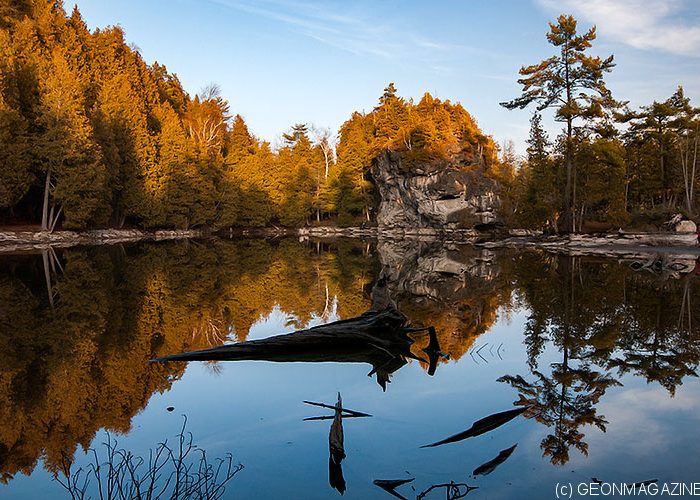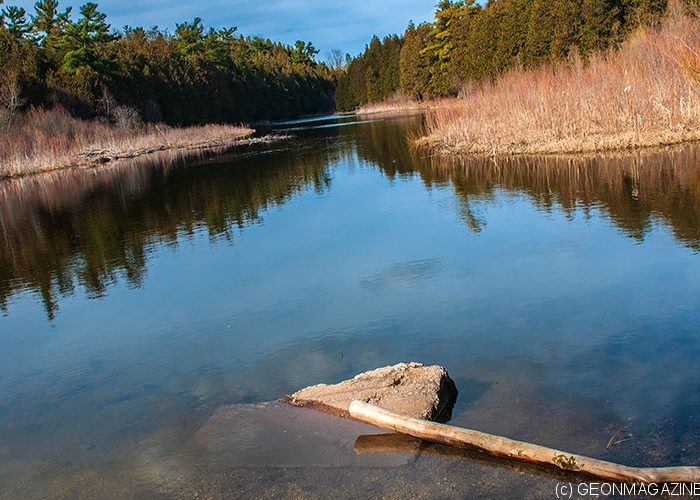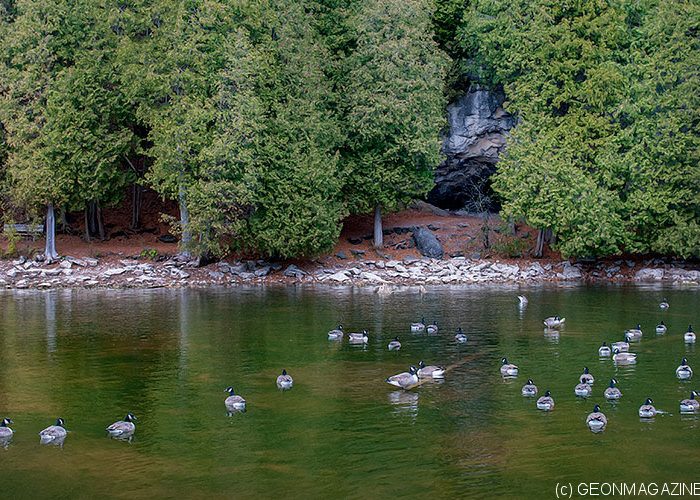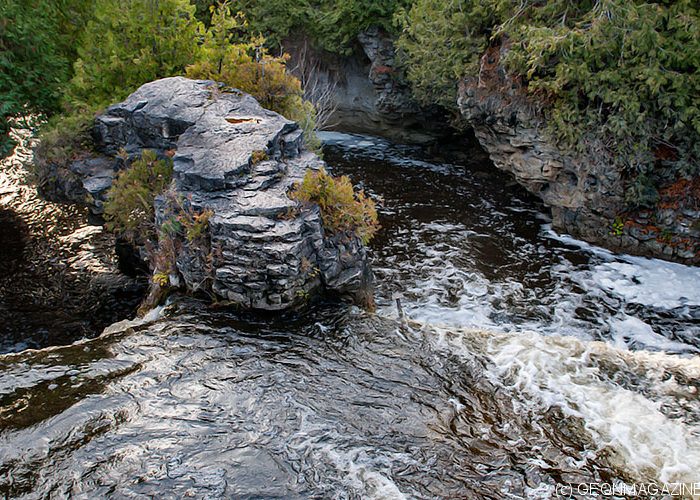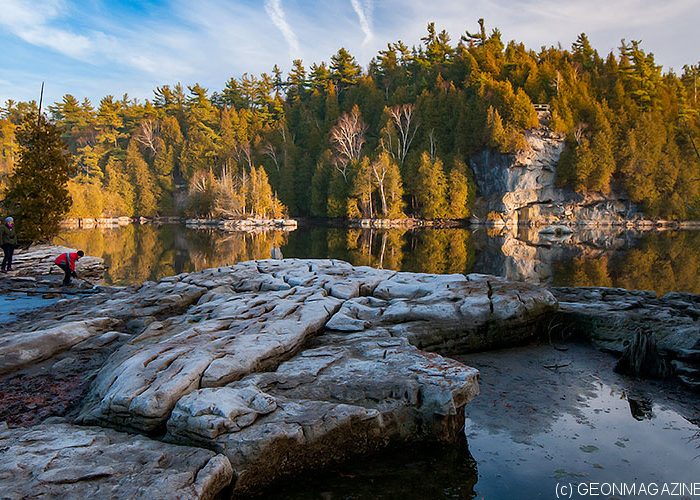Towering limestone cliffs, caves and glacial potholes, including one of the world’s largest, are a few of the natural wonders at Rockwood.
You can view them from hiking trails on both sides of the Eramosa River or in a rented canoe. The park’s unique setting makes it a popular location for television shows, movies and photography shoots. The ruins of the Harris & Co. Rockwood Woolen Mill are fun to explore, book for photographs or other group events.

The ruins of the Harris & Co.
In 1821, John Harris arrived about the area and became the first settler. He built a small house and saw mill.
The next settler was Henry Strange, who opened a limestone quarry. The stone from the quarry was used, among other things, to build more mills.
The original name of the community was Strange’s Mills.
John Harris and his wife Jane had six sons and one adopted daughter. John Harris and his sons were very capable businessmen and built more mills and so many more people came to the area. In 1867, his three oldest sons and one son-in-law joined together and established a woolen mill under the brand name Rockwood Woolen Mills and gave the name to the entire area.
They processed wool and wove linen and were well known for their quality in their day.
The mill was originally built of wood.
But when it burned down in 1880, it was replaced with a stone structure 4 years later. It was originally a water mill, later powered by steam and finally electricity.
The First World War was a life-changing disaster for many ignorant people, but for the mill it was an extraordinary commission. Thousands of army blankets were made here.
Eventually the mill closed in 1925 because it did not stand up to the stiff competition.
The mill stood there until 1965 when it was destroyed by fire. Today, the ruins have been restored.
Rockwood Conservation Area
After production ceased, the family turned the area into Hi-Pot-Lo Park. Rockwood Conservation Area was established here in 1959.
Trails:
Cedar Ridge Trail / 1.7km
Pothole Trail / 1.3km

